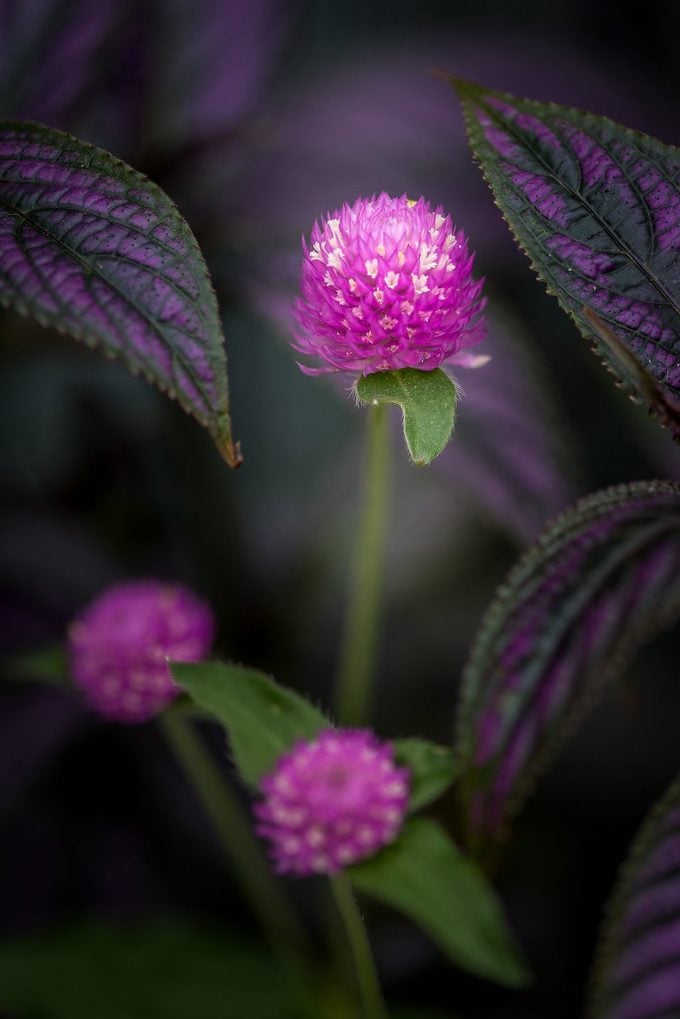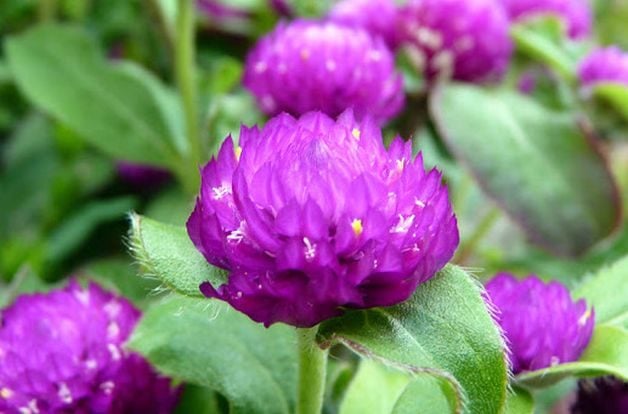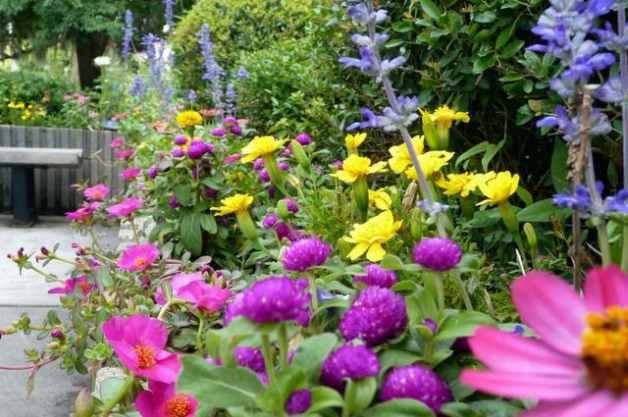Gomphrena, also called globe amaranth, is an easy-care annual that anyone can grow. It also makes a great addition to dried bouquets.
Benefits of Growing Gomphrena

By now, your mailbox is probably awash in all the latest seed catalogs, and you’re starting to think longingly toward spring. As you flip through those vibrant pages, tempted by all you see, you might overlook gomphrena, a pretty little annual also known as globe amaranth, but it’s definitely worth adding to any flower garden.
This easy-care annual bloom has a secret—it dries beautifully, meaning the gomphrena you grow in the summer can grace your living room all winter in a dried bouquet!

Globe amaranth (Gomphrena globosa) is native to Brazil, Panama, and Guatemala. It’s a member of the amaranth (Amaranthaceae) family, which is well-known for its long-lasting blooms. The brightly-colored flower heads, which resemble clover flowers, are actually made up of stiff structures called “bracts.” The flowers themselves are very small and tucked into these colorful heads. Butterflies and other small pollinators are drawn to these tiny flowers.
Gomphrena Care

Plant globe amaranth in full sun to part shade and water well until established. Some varieties are very compact, growing only 6 inches tall or so, while others can stretch their stems up to 2 feet in height. Read catalog descriptions and plant tags when purchasing to determine where to place this annual in your garden.MORE FROM BIRDS AND BLOOMS –
Gomphrena is easy to start from seed, and will bloom in about 90 days. Try a nice mix of colors like this offering from Burpee, or the popular ‘Strawberry Fields’, which boasts brilliant red bloom heads and silvery foliage.
Need annual flowers for shade? Try disease-resistant Beacon Impatiens.
Gomphrena Companion Plants

Gomphrena mixes well with other annuals in the flower garden. Plant shorter versions with marigolds and celosia, and taller varieties among cosmos and zinnias. Gomphrena retains its beautiful color in dried bouquets, too. Snip the stems and hang a bunch upside-down in a cool dry place for a few weeks. Then display them as part of a dried flower arrangement.







